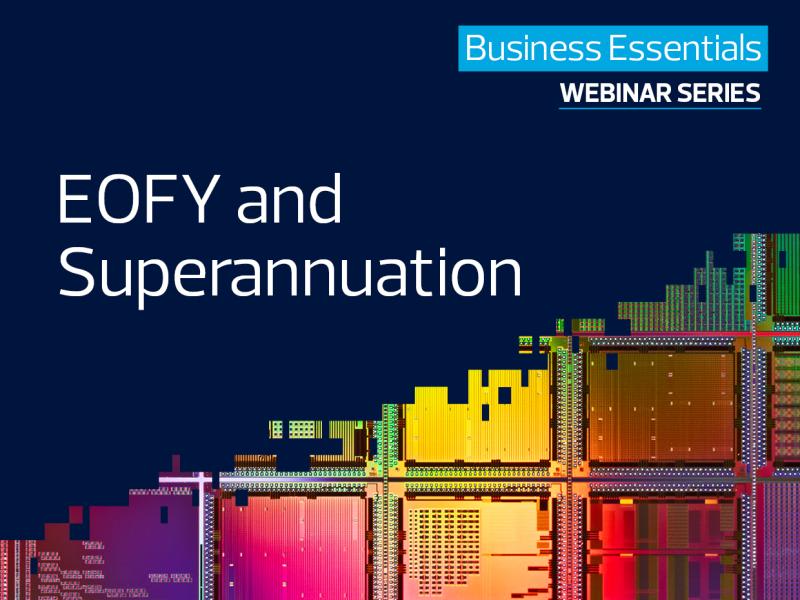AUTHORS

On 7 March 2025, a majority of the Full Federal Court dismissed the taxpayer’s appeal in AusNet Services Limited v Commissioner of Taxation [2025] FCAFC 21 (AusNet Appeal), holding that the CGT rollover provisions contained in Division 615 of the ITAA 1997 applied to the ‘top-hatting’ of a triple staple, thereby denying the taxpayer access to increased capital allowance deductions that would otherwise be available to it.
Beyond its direct guidance on the application of Division 615, the AusNet Appeal may have implications for other areas of the income tax law, including in particular the demerger provisions contained in Division 125, and to a lesser extent, other CGT rollover provisions such as those contained in Subdivisions 124-E and 124-F.
Background
The AusNet Appeal concerned three schemes of arrangement whereunder the stapled securities in three entities (first ‘Transmission’ Limited, then ‘Finance’ Trust and finally ‘Distribution’ Limited) were transferred to a shelf company, AusNet Services Ltd, in exchange for shares therein. Following the schemes of arrangement, Distribution became a subsidiary member of an income tax consolidated group of which AusNet was Head Company, whereas an election was made for the continued existence of the income tax consolidated group of which Transmission was Head Company.
AusNet made three broad arguments concerning the application of Division 615 to Distribution:
- There was not a “scheme for reorganising [Distribution’s] affairs within the meaning of paragraph 615-5(1)(c);
- The Distribution scheme was not one in which the exchanging shareholders received shares in the interposed company “and nothing else” because one effect of the Distribution scheme was to increase the value of the Ausnet held immediately before the scheme came into effect; and
- The ratios in subsection 615-20(2) were not equal, because individual shareholders’ interests at the completion time included the shares already issued to that shareholder in exchange for their Transmission shares and Finance units.
As the focus of this article is on the potential broader implications of the judgment on Division 125 and other provisions, we will only consider the first two of these three arguments.
The underlying policy
The Australian capital gains tax (CGT) regime balances competing policy goals. The CGT regime was introduced primarily to foster greater fairness and equity. Roll-over relief from CGT was introduced primarily to counter the economic inefficiencies caused by a system that typically operates on a realisation basis (i.e., the ‘lock-in effect’). Originally, roll-overs were permitted in strictly limited circumstances, though they have expanded over time – such as with demerger relief, which was introduced to “facilitate the demerging of entities by ensuring that [CGT] considerations are not an impediment to restructuring a business.”
AusNet can be understood in this context as a case which arguably expands when roll-over relief is available and therefore shifts the balance towards greater economic efficiency.
‘Scheme for reorganising its affairs’
For the roll-over in Division 615 to be available, paragraph 615-5(1)(c) requires there to be a ‘scheme for reorganising’ a company or unit trust’s affairs. The taxpayer contended that the primary judge erred in finding there was a scheme for reorganising Distribution’s affairs for these purposes and that the transaction was more akin to an amalgamation or merger. AusNet argued that there was not a scheme for reorganising:
- Because Distribution did not carry on the same business after the scheme; and
- Because the scheme did not affect Distribution’s affairs alone (i.e., it involved a significant reorganisation of the broader group’s affairs too).
The Court rejected both of these arguments, finding that:
- The term “scheme for reorganising the affairs” should be interpreted according to its ordinary meaning in the statutory context of Division 615. A scheme that satisfies the requirements of the surrounding provisions – including a scheme that changes only the identity of shareholders falls within this definition. It would not matter if the Distribution scheme had changed Distribution’s business.
- Div 615 would have no work to do if schemes that also affected the affairs of an interposed company were not covered.
‘…and nothing else’
Under Division 615, the exchanging members must receive “shares in the interposed company (and nothing else)”. The taxpayer contended that the Distribution scheme did not satisfy this requirement because one effect of the scheme was to increase (or ‘boost’) the value of pre-existing AusNet shares that the shareholders held immediately before the scheme came into effect as a consequence of the previous acquisitions of Transmissions and Finance.
The Court rejected this argument, focusing on what the shareholders directly received in exchange for their shares in the original entity in the traditional contractual sense, and not a more general enquiry into the broader, incidental consequences of the transaction. On this interpretation, the shareholders only received shares in AusNet (and nothing else) in exchange for their Distribution shares. Therefore, the ‘nothing else’ requirement is not contravened where the shares received carry with them the right to participate in a subsequent transaction.
Broader implications?
The demerger provisions of Division 125 contain similar requirements to the ‘scheme for reorganising’ and ‘nothing else’ conditions of Division 615 and therefore the AusNet decision may also be applicable in the context of Division 125.
Division 125 applies to “a restructuring of the demerger group”. Whether a ‘scheme for reorganising’ or ‘a restructuring of the demerger group’ satisfies the applicable requirements of Division 615 of 125 may depend on whether a particular step or transaction forms part of the relevant ‘scheme’ or ‘restructuring’.
In Taxation Determination TD 2020/6, the ATO adopts the view that ‘restructuring’ should be interpreted broadly to consider “all the steps which occur under a single plan of reorganisation” and “not only the delivery of the ownership interests… but also any other previous or subsequent events, acts or transactions in a sequence of events, or acts or transactions sufficiently connected with those prescribed statutory steps to form part of a single plan.” This view, which turns to dictionary definitions rather than statutory context or extrinsic materials, has been criticised as being unnecessarily constraining in the way that it puts roll-over relief at risk when capital market transactions are known, planned, or intended to occur in concert with the demerger. TD 2020/6’s broad delineation of ‘restructuring’ is arguably threatened by the judgment in AusNet.
Division 125 contains a requirement that an entity “acquires a new interest and nothing else”. In TD 2020/6, the Commissioner takes a broad view of this restriction. In Example 3 of the Determination, demerger relief was not available where the in-specie distribution and listing of a subsidiary’s shares was followed by a sale of the head company to a third-party. The Commissioner states that it can be objectively inferred that the in-specie distribution of the subsidiary’s shares occurred in preparation for the third party’s takeover proposal. The Commissioner’s reasoning is predicated on a broad view of ‘restructuring’ and a view that the right to have your shares acquired by a third-party is something which contravenes the ‘nothing else’ requirement.
This can be contrasted with the judgment of Logan J in the AusNet appeal who ruled that the application of the ‘nothing else’ criterion in paragraph 615-5(1)(c) is confined “just to an exchange where shares in the interposed company, as opposed to additional consideration, are received. It does not look to incidental consequences of the ‘exchange’.” Applying this narrow focus on what the shareholders directly receive in exchange for their shares to the demerger provisions suggests that the scope of a restructuring for Division 125 purposes should be restricted to the steps that satisfy the conditions of s125-70 and by which the ownership interests are conveyed.
The Commissioner may need to reconsider his guidance on the demerger provisions in light of the Full Federal Court’s decision in AusNet, as aspects of the determination may no longer be tenable if AusNet is not overturned.
A final word of warning
Before applying AusNet to the demerger (or other similarly-worded) provisions, it is important to recall the following:
Firstly, as the case did not directly say anything about the demerger provisions, the approach taken is not binding on the Commissioner in terms of interpreting Division 125. While Division 615 and Division 125 contain similar wording (e.g., ‘in exchange’ and ‘under the restructuring’), the Commissioner may conclude that one phrase should be interpreted more broadly than the other and therefore AusNet should be confined to Division 615.
Secondly, on 3 April 2025, AusNet applied for special leave to appeal the decision to the High Court and therefore the decision may be overturned. While the taxpayer’s grounds for appeal do not appear to be in relation the scope of the ‘scheme’ and ‘nothing else’ requirements, the High Court could reject or clarify the decisions of the lower courts.
FOR MORE INFORMATION
If you would like to learn more about the topics discussed in this article, please contact your local RSM office.





